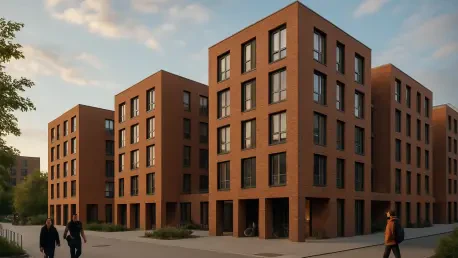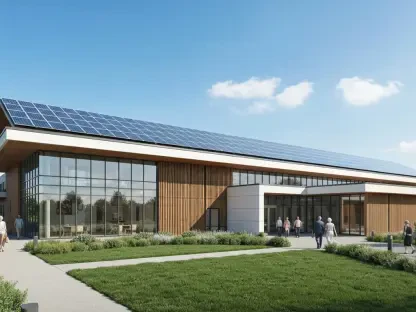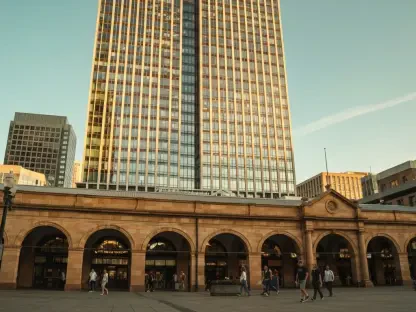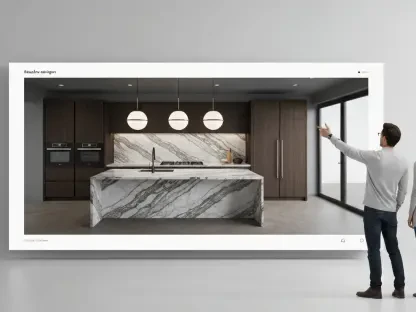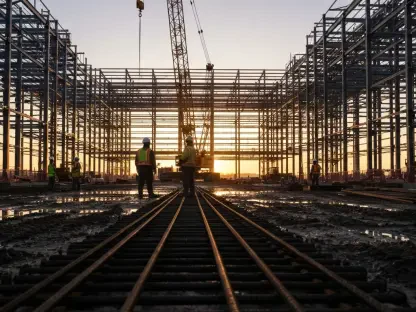Diving into the world of innovative real estate development, I had the privilege of sitting down with Luca Calaraili, a seasoned expert in construction, design, and architecture. With a deep passion for integrating technology and pushing boundaries in the industry, Luca offers invaluable insights into purpose-built student accommodation and sustainable practices. Today, we’re focusing on a transformative project in Hackney Wick, where Luca sheds light on the vision, challenges, and community impact of this exciting development. Our conversation explores the strategic importance of the location, the blend of history and modernity, and the commitment to sustainability and social value.
Can you share the vision behind the Hackney Wick student accommodation project?
Absolutely. The goal for Hackney Wick is to create a high-quality living environment that meets the growing demand for student housing in key university areas. It’s about providing not just a place to stay, but a space that supports students’ academic and social lives. This project is part of a broader mission to enhance living options across the UK, focusing on modern, accessible, and community-oriented developments. We’re thrilled to deliver 204 bed spaces, with a significant portion—35%—dedicated to affordable housing, ensuring inclusivity is at the core of our vision.
What makes Hackney Wick such a prime spot for student housing?
Hackney Wick stands out due to its proximity to major educational institutions like University Arts London and UCL East—just a 15-minute walk away. This accessibility is a huge draw for students. Beyond that, the area has a vibrant cultural scene with bars, restaurants, and shopping centers, creating a lively atmosphere that students crave. It’s a place where they can balance studies with a rich social life, making it an ideal location for purpose-built accommodation.
How are you designing the Hackney Wick development to elevate the student experience?
We’ve put a lot of thought into the design to ensure it’s more than just a dorm. The 204 bed spaces are modern and spacious, prioritizing comfort. On top of that, we’re including amenities like co-working study spaces, common rooms, a gym, private dining areas, and two outdoor roof terraces. These features are meant to foster community, support productivity, and give students spaces to unwind. It’s about creating a holistic environment where they can thrive.
Why was it important to preserve the historic elements of the site, like the brick chimney from the Broadwood piano factory?
The site has a rich history, dating back to the early 1900s with the Broadwood piano factory. Preserving the brick chimney was a non-negotiable for us—it’s a nod to the area’s heritage. We’re integrating this historic feature into the modern design to create a unique blend of old and new. It’s not just about aesthetics; it’s about respecting the past and giving the development a sense of place and identity that connects with the local community.
What measures are being taken to ensure sustainability in this project?
Sustainability is a cornerstone of the Hackney Wick development. We’re targeting a BREEAM “Excellent” rating, which is a globally recognized standard for sustainable building design. This means incorporating energy-efficient systems, sustainable materials, and designs that minimize environmental impact. From construction practices to the final features, like efficient heating and waste reduction strategies, we’re committed to creating a building that’s as green as possible while still being functional and comfortable for students.
Can you tell us more about the collaboration with the construction team on this project?
We’ve partnered with a team that brings a wealth of experience in delivering student accommodation projects, along with deep local knowledge of the Hackney Wick area. Their track record in creating modern, high-quality developments made them the perfect fit. Their expertise ensures that we can tackle challenges unique to the site and deliver on time, while their familiarity with the community helps us align the project with local values and needs. It’s a partnership built on shared goals of quality and innovation.
How do you see this development impacting the local community in Hackney Wick?
We’re not just building student housing; we’re contributing to the broader community. A key part of this project is dedicating around 1,400 square meters to affordable and incubator workspace for the local creative industry. We’re working closely with community interest groups to ensure these spaces meet real needs, fostering entrepreneurship and creativity. This initiative, alongside the student presence, will bring new energy to the area, supporting local businesses and enriching the cultural fabric of Hackney Wick.
What’s the timeline for the project, and what hurdles do you anticipate?
Work has already started on the site, with the first steps focusing on groundwork and securing the area for construction. We’re aiming for completion in time for the 2027/28 academic year, which keeps us on a tight but achievable schedule. Challenges are always part of the process—whether it’s navigating unexpected site conditions or ensuring we meet sustainability targets without compromising quality. But with a strong team and clear planning, we’re confident in addressing these head-on and delivering on our promises.
What’s your forecast for the future of student accommodation developments in urban areas like Hackney Wick?
I see a bright future for purpose-built student accommodation in urban hubs. As university populations grow and cities become more densely populated, the demand for well-designed, accessible housing near campuses will only increase. I expect we’ll see more projects like Hackney Wick that prioritize sustainability, community integration, and affordability. Technology will also play a bigger role—think smart buildings with energy management systems and flexible spaces. The focus will shift toward creating environments that support both academic success and personal well-being, and I’m excited to be part of that evolution.
